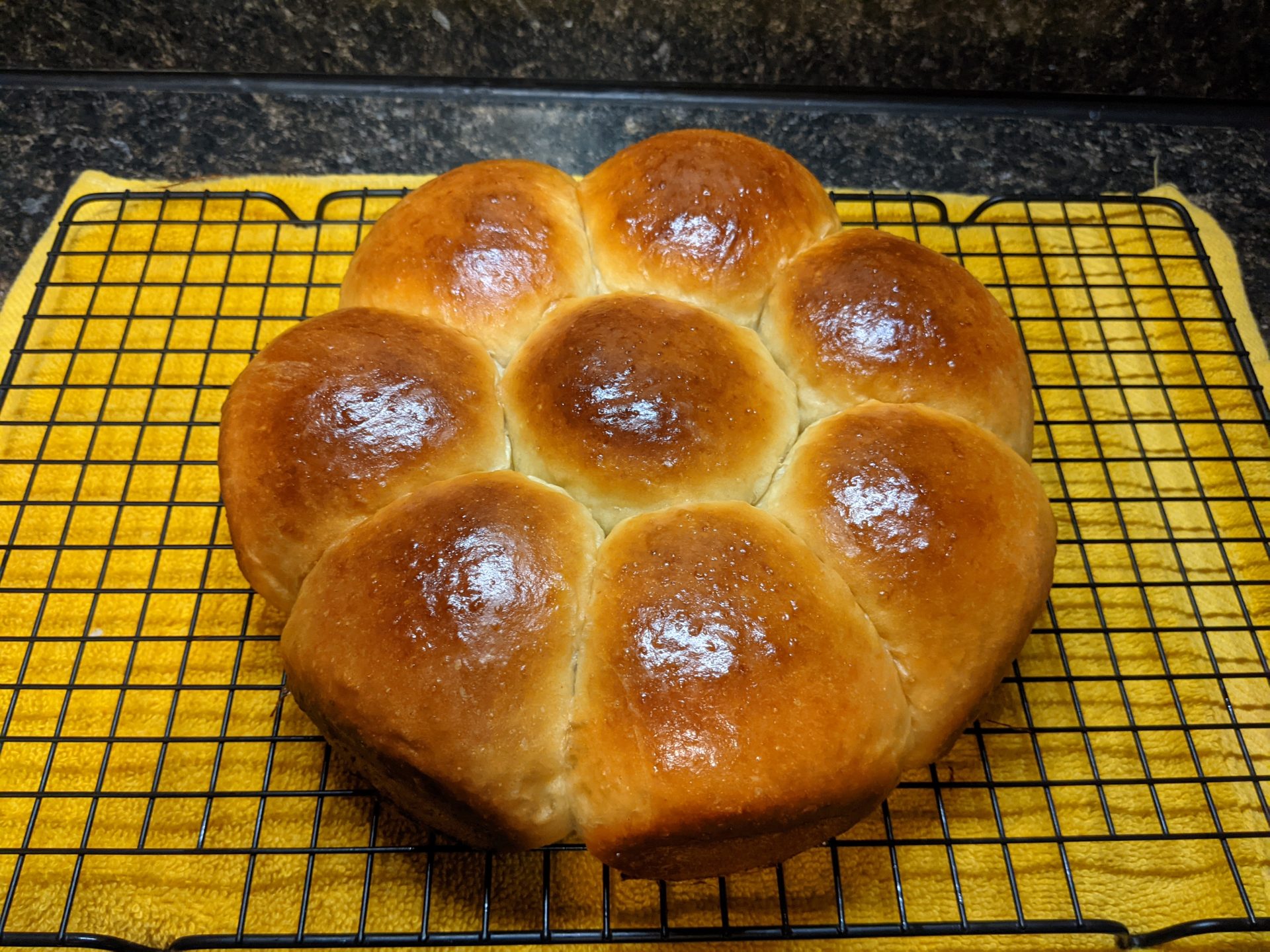A Japanese recipe using Chinese techniques filtered through an American company.
All the way back at the start of quarantine, I was one of many people who decided to bake some bread. And why not? I left my job to avoid the virus, and I had a lot of time on my hands. I tried a few different breads, but then I found a video on YouTube. Specifically, this video:
This bread turned out amazing. It’s light, it’s fluffy, it’s photogenic, and it was super tasty with a little jam. Unfortunately, since this was before I had decided to start a blog, I didn’t have a decent photography setup and I didn’t take a bunch of photos. Even then, it looked great:
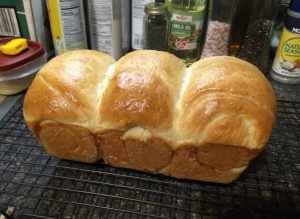
In fact, this bread turning out great was part of why I decided to start this blog in the first place. I had originally intended to do a lot more baking, but turns out I’ve been making some big, delicious meals, and documenting them has been fun as well.
My partner kept bugging me to re-make this bread for the blog. I thought he just meant any milk bread, though, so I found a different recipe. Specifically this one, from King Arthur Baking. And, as part of my reviews section, I figured why not give it a review? I’m not going to reproduce the recipe here, since you can go see it on their site.
Making the Recipe
Making the recipe itself is easy. It’s a little odd if you’ve never made a bread like this before, though. You have to make a “starter” known as a Tangzhong first, which is basically just a roux of water, milk, and flour. You cook the roux a bit until it thickens and looks a bit like this. That Tangzhong is the Chinese element which has been adopted into Japanese cooking.
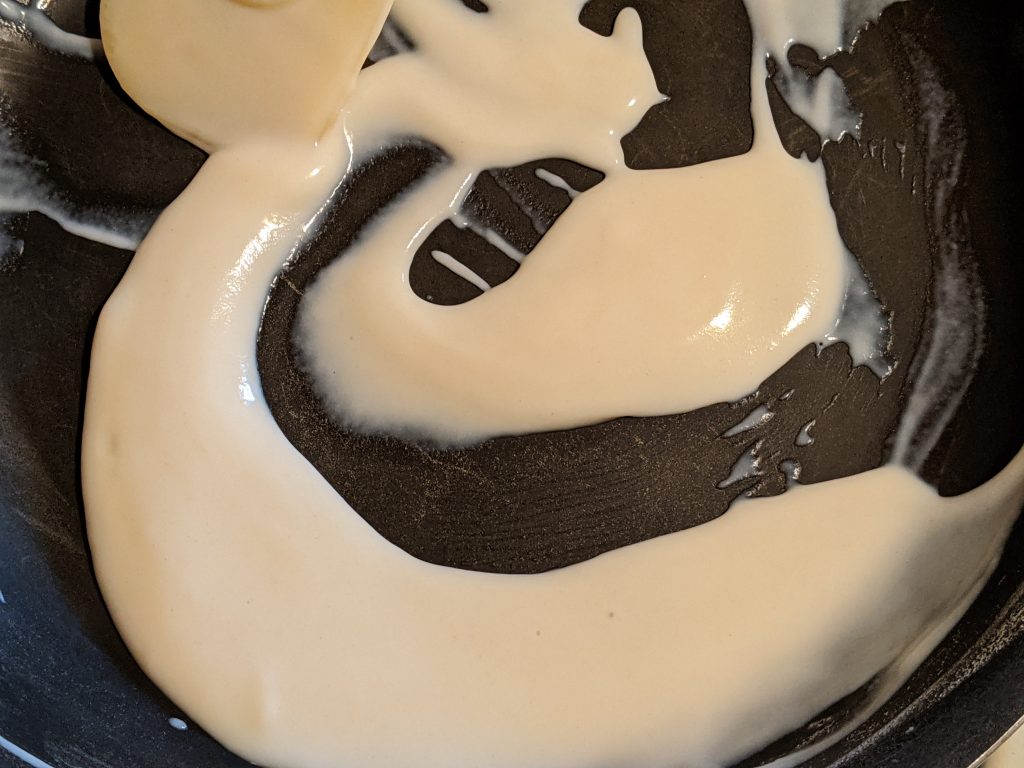
You use the starter to make the dough, knead and ball it up, and let it rise, deflate, divide, and rise again. You end up with something a little like this:
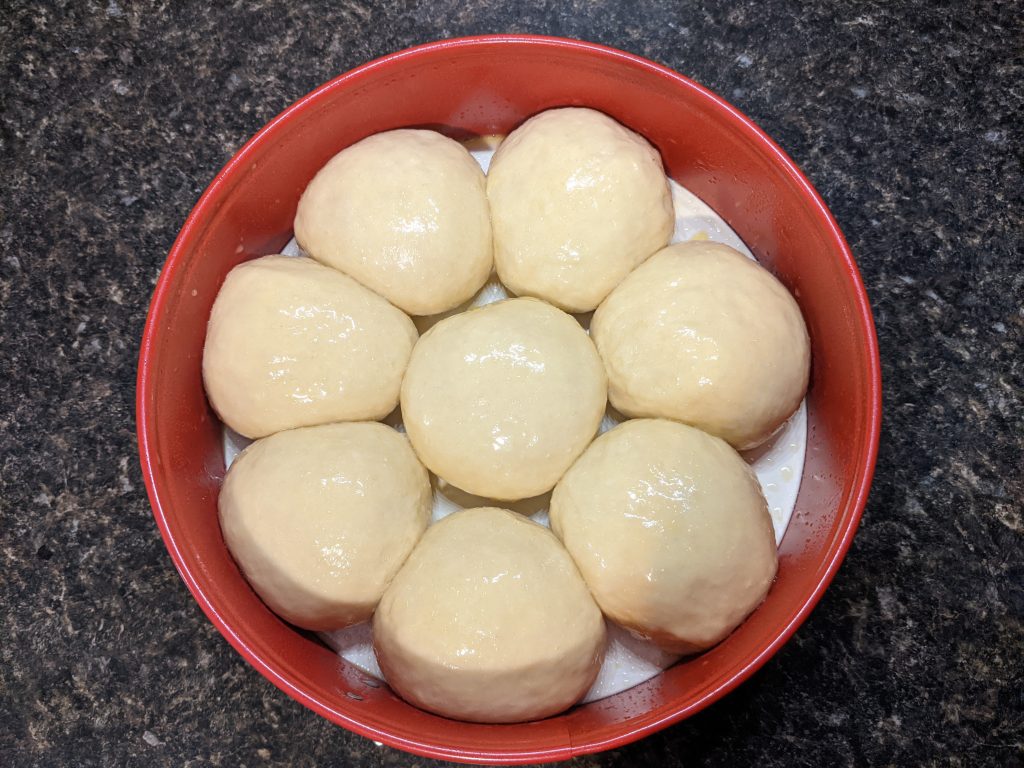
From there, you give them an egg wash and bake. King Arthur Baking recommends using a thermometer to probe the center and make sure it’s hot enough. The end result?
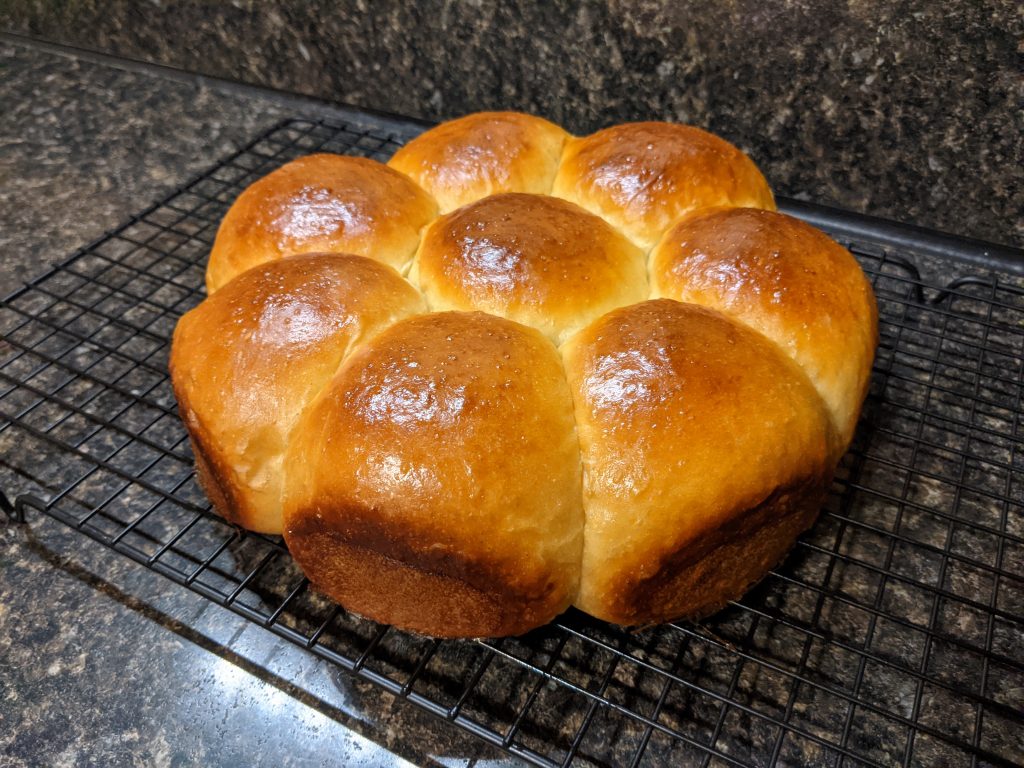
My Verdict
One of the strange things about this recipe is that it calls for dry milk rather than, you know, just milk. I’ve never used dry milk before. I had to buy a huge sack of it too, even though I only needed two tablespoons of it, so I have plenty to do other things with. Honestly, I don’t know why it uses dry milk instead of normal milk, since the recipe I made the first time used normal milk and turned out just fine.
The dough as written in King Arthur Baking’s recipe was a bit too sticky, and I ended up needing to add almost a quarter cup more flour than it initially calls for. I’m used to needing to make adjustments like that, though, since a lot of it comes down to environmental factors like humidity. I almost always need to use a little more flour than a recipe calls for.
The egg wash made them very dark, which isn’t necessarily a bad thing. I recently found a post from The Spruce Eats about different kinds of wash, and I might try a different one next time to keep them a little lighter. Other than that, I was a little afraid they wouldn’t rise as much as they did, but once they baked they were puffy and fluffy and delicious.
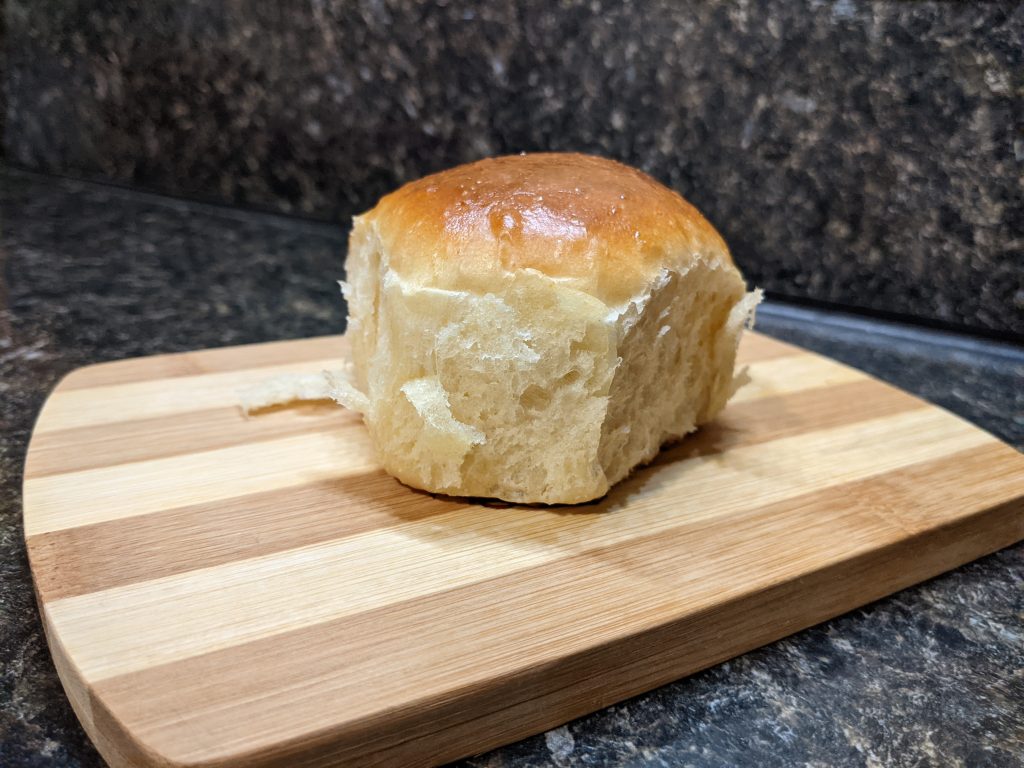
Overall, I don’t really have any major complaints about the recipe. I’m not too familiar with milk breads (I’ve only made them twice now and they both turned out great), so I don’t know how much I can tweak without something going wrong. I definitely think I want to make one again, maybe yet another recipe, and I want to experiment with adding some flavorings like brown sugar or cinnamon. They’re definitely a sweet white bread, so they take well to sweet things like jam, but they also work fine as rolls with a bit of butter.
If you try it too, let me know how you like it!

